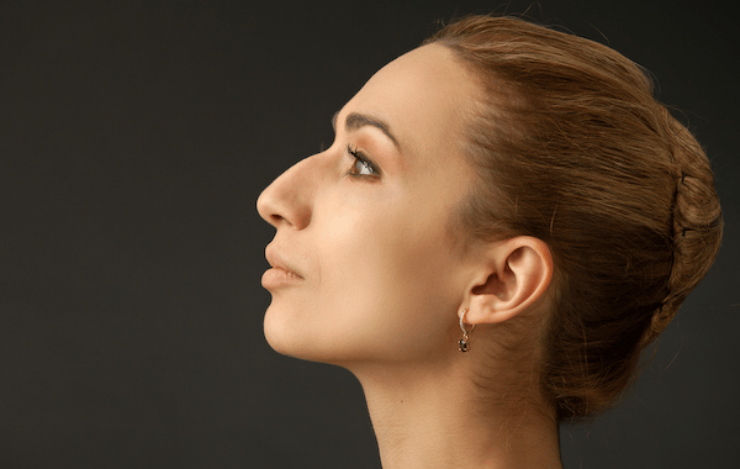Journal
How is Korean Rhinoplasty Performed on Different Ethnicities?
2023-10-31
Nose

Many individuals seeking ethnic rhinoplasty aim to enhance their noses while preserving their unique ethnic characteristics. Their desire is not to completely adopt a Westernized appearance, but rather to achieve a refined nasal look that complements their facial features. As a result, a one-size-fits-all approach to rhinoplasty is inadequate. Every patient possesses distinct traits, and different ethnicities also contribute to this diversity, underscoring the importance of a specialized approach for successful outcomes.
Many patients express concerns about potentially losing their ethnic identity when undergoing nose reshaping surgery. These individuals grapple with a dilemma: pursuing their desired nose shape without risking a generic final result. To achieve the right balance, rhinoplasty procedures must be individually tailored to harmonize with each patient's unique facial features and ethnicity. Our medical professionals engage in thorough discussions with patients to understand their objectives fully and deliver a specialized approach that aligns with the distinct attributes of their nasal features.
Caucasian Rhinoplasty
Rhinoplasty is considered a highly intricate cosmetic surgical procedure, demanding a unique approach for every patient, even for the common Caucasian nose surgeries. Within the Caucasian population, distinctive nasal features are observed. Those from northern Europe commonly exhibit broad nasal bridges and prominent tips, while individuals of northwest European descent tend to have upward-pointing noses. Overall, Caucasians tend to possess slightly broader and longer noses when compared to other ethnic groups globally.
Typical characteristics of Caucasian noses:
• Surrounded by thin skin
• Long nasal bone
• Strong cartilage
• Narrow trapezoid shape
• Oval-shaped nostrils
• Long columella separating nostrils on the base of the nose
• Obtuse nasolabial angle in the crease under the nose
• Very defined

Asian Rhinoplasty
The techniques used in Asian rhinoplasty differ significantly from those used in Caucasian rhinoplasty. The traditional approach for reducing the size of the nose through cartilage reduction and reshaping, commonly utilized in Caucasian rhinoplasty, may not yield aesthetically pleasing results in Asian rhinoplasty. In Asian rhinoplasty, the primary objective is to craft a refined and natural-looking nose that harmonizes with the overall facial features, rather than striving to create a nose resembling a Caucasian one.
In contrast to Caucasian rhinoplasty, which frequently involves reducing and reshaping the nose's size, Asian rhinoplasty often focuses on enhancing the bridge's size to achieve better nose definition within the facial context. Another common goal is to refine a small, under-projected nasal tip and narrow the wide nasal base. Various surgical and sometimes non-surgical options are available to accomplish these goals. However, caution must be exercised to avoid over-correction, a risk associated with surgeons inexperienced in Asian rhinoplasty. This includes excessive narrowing of the nostrils, an overly pronounced tip, or an overly augmented bridge. Our specialized Korean doctors, possess expertise in Asian rhinoplasty and are well-versed in the most effective techniques for Asian noses.
Asian descent encompasses a diverse range of individuals spanning from East to West Asia, with East Asians being the most common group characterized by their typically slim noses, often having the smallest nasal surface area. However, South and Southeast Asians tend to exhibit a larger space between the wings of the nose (nasal alar).
In many Asian rhinoplasty cases, it is essential to use both a dorsal graft and tip grafting to achieve tip definition and projection, considering the distance from the base of the nose to the front part of the tip. When performing Asian rhinoplasty, a critical decision arises regarding the choice between utilizing synthetic medical-grade implants (e.g., Silicone implants) to build the bridge or utilizing the patient's own cartilage from the nasal septum or ear. Silicone implant is commonly employed by many surgeons in Asia and North America. However, most Asian patients do not possess sufficient ear or septal cartilage to achieve a significant improvement in the size of the nasal bridge. Your doctor will assess your surgical options and engage in a discussion about the advantages and disadvantages of each alternative. Together, you will make an informed decision that best suits your needs.
Typical characteristics of Asian noses:
• Thick skin
• Significant fibrofatty tissue
• Set deep and lower in the face
• Short, wide, flat nasal bone
• Slight nasal bridge
• Acute nasolabial angle
• Flaring nostrils
• Short columella
• Wide/bulbous short nose
• Slight definition
• Weak cartilage
• Low nasal tip strength

African Rhinoplasty
The majority of African rhinoplasty patients seek to enhance the aesthetics of their noses while preserving their cultural heritage and personal identity. Typically, this procedure involves elevating the nasal bridge and narrowing the nostrils. Africans often possess broader and somewhat flatter noses in contrast to individuals of European descent. Additionally, African nasal bones tend to be relatively shorter, necessitating specialized attention in the context of ethnic rhinoplasty procedures. African skin is typically thicker, which can present challenges when refining the nasal tip, demanding specialized surgical skills and care.
A prevalent concern among African patients is the width of their nostrils, often accompanied by a wide nasal tip and a broad nasal dorsum or a low, wide hump. West Africans, in particular, tend to have the widest nostrils. Furthermore, the space between the nasal alar, or wing of the nose, is significantly larger in West Africans when compared to individuals of European ancestry. Addressing each of these concerns requires a distinct and personalized surgical approach.
Some noses exhibit weak cartilage and are short in length with thick skin. To achieve tip definition and support, a tip graft can be employed using the patient's own cartilage from either the septum, ears, or a synthetic medical-grade implant. In certain cases, a dorsal graft may be necessary to elongate an exceptionally short nose, creating the illusion of a slimmer appearance. During the procedure, your doctor will custom sculpt the implant to suit your specific nasal structure, as it is not a one-size-fits-all solution.
The doctor will thoroughly assess your surgical options and engage in a comprehensive discussion about the benefits and drawbacks of each alternative. Together, you will arrive at a decision that best aligns with your individual needs and goals.
Typical characteristics of African noses:
• Surrounded by thick, oily skin
• Thin/loose cartilage
• Low nasal bridge
• Cartilage covered by fibrofatty tissue
• Wide appearance
• Outward flaring, egg-shaped nostrils
• Short columella
• Broad, flat nasal bone
• Large and bulbous
• Vague definition
• Thin cartilage at the tip of the nose

Middle Eastern Rhinoplasty
Achieving excellent results in nasal surgery necessitates recognizing that a uniform approach is not suitable for every patient. Numerous factors must be carefully considered, and a vital consideration among these is the patient's ethnicity. Different ethnic groups exhibit distinct features and traits that demand specific techniques in the course of rhinoplasty surgery, and this holds particularly true for Middle Eastern patients. Individuals seeking the common "nose job" within the Middle Eastern population may commonly display several of these shared nasal characteristics.
Typical characteristics of Middle Eastern noses:
• Surrounded by moderately thick, oily skin
• Undefined lower third
• Full supra tip
• Low, hanging nasal tip
• Obtuse nasolabial angle
• Strong nasal cartilage
• Flared nostrils
• Over-projected nasal bone
• Curvature of the nasal bridge
• Higher fixed nose
• Wide nasal bones

The distinctive nasal characteristics within different ethnicities underscore the inadequacy of grouping various ethnicities when addressing concerns and the overall success of rhinoplasty. Even the categorizations employed in this article remain fairly broad. It's important to consider the patient's racial background to ensure that cultural aesthetics, facial harmony, and the overall procedure's success are maintained. Surgeons well-versed in rhinoplasty for diverse ethnic backgrounds possess an understanding of what appears natural for individuals from those backgrounds and are familiar with the typical nasal anatomy of those groups. This knowledge significantly enhances the likelihood of achieving a naturally harmonious post-surgery outcome for all patients.
Regardless of one's ethnicity, every rhinoplasty procedure should be customized to the specific patient. The surgeons we work with are dedicated to investing the necessary time to craft a personalized treatment plan for each patient, striking a balance between preservation and enhancement to achieve the most favorable surgical results. Reach out to us by booking a consultation today!
Back


